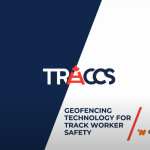The Communications Planning Matrix
Communications, Connectivity, Technology and IT investment decisions can be complicated and require a thorough evaluation of various factors. These factors are (almost) always specific in their scope to every project or company and the particular point in time the strategy is created.
Over the past 10 years, we’ve worked on thousands of sites and projects and at the most fundamental level, there are really just four options for technology investment. These are Upgrade, Replace, Do Nothing and New.
Weighing Up The Options
Let’s explore each option in detail, but the first essential step in the process is to assess the possibility that the system, components or solution you have is adequate and there is no action to take. As all communications, connectivity and IT infrastructure are interrelated, “do nothing” may well be suitable for parts of the overall system.
Do Nothing - Maintain the Status Quo
As the name suggests, this option involves maintaining the status quo and not making any changes to the existing system. This option is typically pursued when the existing system is still functioning well and there are no pressing business needs to make changes.
Do Something!
When the assessment is completed and there is a strong case for improvement based on system/component failure, a new business challenge or a proactive opportunity for competitive advantage there are three options to consider.
We’ve ordered these in terms of complexity and benefit, from simplest to complex in terms of integration, but this also has an impact on the net benefit realised by the changes
Replace -
Like for Like
Replacing refers to completely replacing an existing system with a new one. This option is typically pursued when the existing system is outdated or no longer meets the business requirements.
Upgrade -
Faster, Better, Stronger
Upgrading refers to making improvements or adding new features to an existing system or technology. This option is typically pursued when the existing system is still functional but needs to be updated to meet changing business needs or to take advantage of new technology advancements. Upgrading may also be required if some constituent elements are end-of-life or out of support scope.
New -
Additional, Alternative Solution
This option involves introducing a completely new system or technology that is unrelated to the existing system. This option is typically pursued when a new technology has emerged that has the potential to bring significant benefits to the business.
In reality, when new technology investments are on the horizon due to a new project, site, or business need, in most cases there is a combination of these approaches as technology relies on the interconnection of so many moving parts and factors in the overall equation.
For example, there may be newly added sites which may motivate new connectivity equipment, but the cloud platforms they connect to have already been scaled to a point to handle this (do nothing.) Another example could be where that has been technological development in a certain field which unlocks extra power, capability or bandwidth, but the core system, methodology and network topology can remain the same – so upgrade becomes a suitable approach. Replacing equipment is often required when it has failed, or for more risk-averse when it is out of warranty or support contracts, but the functionality remains adequate for the business.
Making the Decision
When making a technology investment decision, it’s important to consider factors such as the costs, benefits, and risks associated with each option, as well as the long-term strategic goals of the organisation. Within this analysis, several key factors need to be taken into account:

Proper Planning Prevents Poor Performance
When considering your new connectivity or tech investment and before you get to decide where on the investment matrix you’ll need to land, and far before the speed, feeds and specs, it’s important to start with strategy. This is rooted in a problem definition and desired outcome statement.
This process typically involves several steps:
Define the problem or opportunity
This involves identifying the business need that the IT investment is meant to address.
Conduct a feasibility
study
This involves evaluating the technical, financial, and operational feasibility of the proposed IT investment.
Develop the
project plan
This involves defining the scope, timeline, and budget for the IT investment, as well as identifying the key stakeholders and resources required.
Seek approval
and funding
This involves presenting the tech investment proposal to the relevant decision-makers and securing the necessary funding and resources.
Making IT Work
The next two stages of the project plan rely on the defined scope from the first three stages and are often best integrated into the analysis of the problem and approval funding stages in an agile manner rather than a waterfall approach.
Continuous Improvement
Two, often overlooked, critical items in the technology strategy and project plan are concerned with the wider perspective of how the project implementation is achieving against the initial targets of the project. These are the monitoring and evaluation and support elements of the project.

How Onwave Can Help
We have worked with hundreds of companies on their demanding connectivity, technology, IT and communications strategies and project rollouts across a diverse array of sectors and industries. Our team of expert technologists, engineers and project managers are dedicated to finding the most effective technology-focused solutions to your complex business problems, always weighing up the balance of options for upgrading, replacing or buying new equipment against the cost of doing nothing.
Onwave has a dedicated team to support our customers through the project planning and implementation phases. We also have deep experience in network monitoring and managed services to ensure the solution is keeping its promise and acting quickly to real-time information to ensure your investment meets both its performance goals and business impact.








